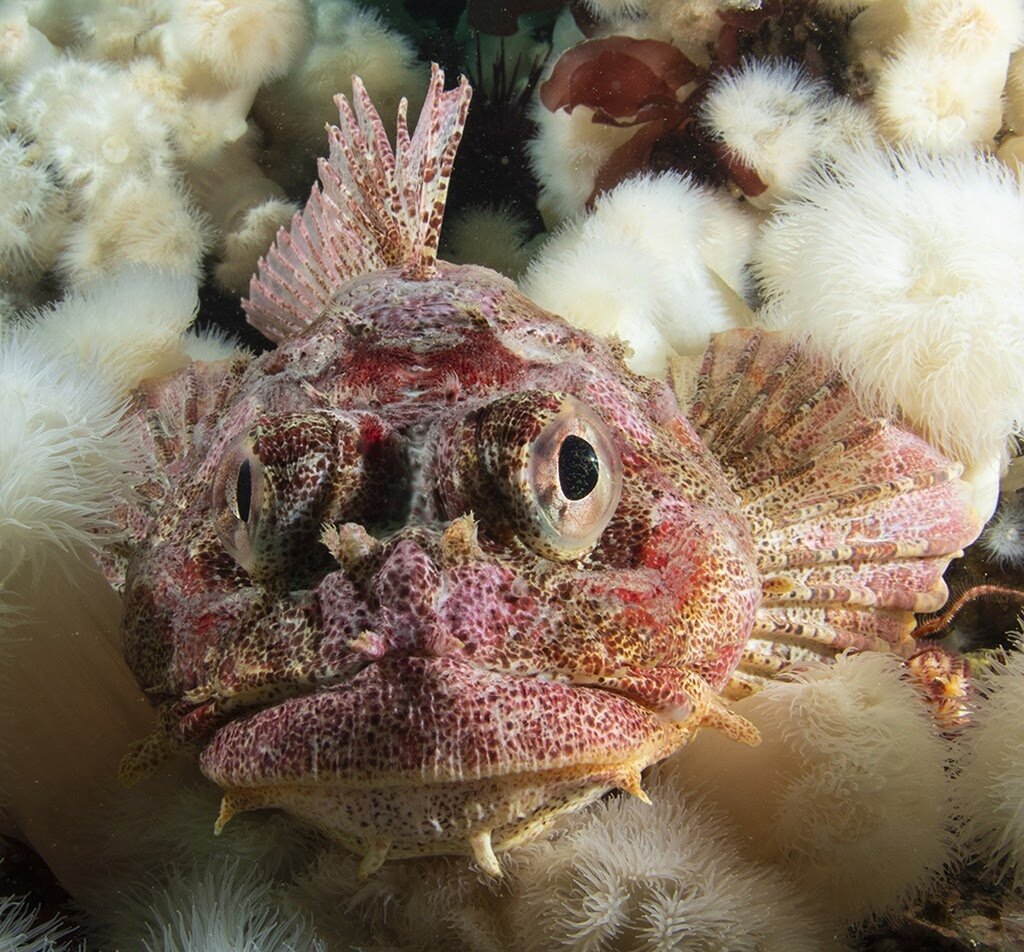Introduction To Rock Fish

Rock fish are a diverse group of fish that inhabit the rocky areas of the ocean. They are characterized by their large eyes and mouth, compressed lower body, jutting lower jaw, and a large dorsal fin with well-developed spines. There are more than 100 species of rock fish, each varying in size, color, and shape. These fish are highly sought after for their delicious flavor and nutritional value. In this article, we will explore the different types of rock fish, their nutritional benefits, popular cooking techniques, fishing locations, and the importance of sustainable fishing practices to conserve their populations.
Definition And Types Of Rock Fish
Rock fish are a diverse group of fish that inhabit the rocky areas of the ocean. They are characterized by their large eyes and mouth, compressed lower body, jutting lower jaw, and a large dorsal fin with well-developed spines. There are more than 100 species of rock fish, each varying in size, color, and shape. Some common types of rock fish include Red Snapper, Black Rock Fish, Yelloweye Rockfish, and Deep-water Redfish. Each species has its own unique characteristics and fishing techniques associated with it. Understanding the different types of rock fish can enhance the fishing experience and culinary exploration.
Nutritional Value And Health Benefits Of Rock Fish
Rock fish is not only delicious but also packed with nutritional value. It is a great source of lean protein, low in calories and fat. Additionally, rock fish is rich in omega-3 fatty acids, which are essential for maintaining heart health, reducing inflammation, and improving brain function. It also contains various vitamins and minerals, such as vitamin D, vitamin B12, selenium, and potassium, which support overall health and immune function. Including rock fish in your diet can provide numerous health benefits and contribute to a well-rounded and nutritious meal.
Popular Varieties Of Rock Fish

There are several popular varieties of rock fish that are highly sought after for their unique flavors and characteristics. One such variety is the Red Snapper, known for its vibrant red color and delicate, flaky flesh. It is often used in a wide range of cuisines, from Mediterranean to Asian. Another popular variety is the Black Rock Fish, which has a distinct black color and a rich, flavor-packed meat. Its firm texture makes it ideal for grilling or pan-frying. These varieties of rock fish offer a delightful culinary experience for seafood enthusiasts.
Red Snapper And Its Characteristics
The Red Snapper is a highly sought-after variety of rock fish known for its vibrant red color and unique characteristics. It has a streamlined body shape, with a pointed snout and large, sharp teeth. The skin of the Red Snapper is smooth and scales are small, making it easy to prepare and cook. It has a delicate, flaky flesh that is white in color and offers a mild, sweet flavor. The Red Snapper is versatile and can be used in a wide range of cuisines, making it a favorite among seafood enthusiasts.
Black Rock Fish And Its Unique Features
Black Rock Fish, also known as Sebastes melanops, is a popular variety of rock fish with its own distinct characteristics. It has a dark black coloration, which helps it blend in with its rocky habitat. This species has a robust body and sharp spines on its head, providing protection from predators. Black Rock Fish can grow up to 18 inches in length and are known for their strong swimming abilities. They have a voracious appetite and primarily feed on small fish and invertebrates. Due to their unique appearance and delicious flavor, Black Rock Fish is highly prized by anglers and seafood enthusiasts alike.
Cooking Techniques For Rock Fish

When it comes to cooking rock fish, there are several techniques you can use to bring out its delicious flavors. Grilling and broiling are popular options that add a smoky char to the fish, while baking is a great option for a moist and tender texture. Pan-frying is another versatile method that creates a crispy crust. Whether you prefer a simple seasoning or a marinade, rock fish can easily adapt to different flavors. It is important to cook rock fish thoroughly to ensure it is safe to eat and to avoid any risk of foodborne illness.
Grilling And Broiling Methods For Rock Fish
Grilling and broiling are popular cooking techniques that can enhance the flavors of rock fish. When grilling, preheat the grill to medium-high heat and lightly oil the grates to prevent sticking. Season the rock fish with salt, pepper, and any desired spices or herbs. Place the fish directly on the grill and cook for about 4-6 minutes per side, or until the fish is opaque and flakes easily with a fork. Broiling is another great option for a quick and flavorful meal. Preheat the broiler and place the fish on a broiler pan. Cook for 4-6 minutes on each side, or until the fish is cooked through. Keep a close eye on the fish while broiling to avoid overcooking. Serve the grilled or broiled rock fish with your favorite side dishes and enjoy its delicious flavors.
Baking And Pan-frying Rock Fish Recipes
Baking and pan-frying are two popular methods for cooking rock fish, allowing you to enjoy its delicate flavor and tender texture. To bake rock fish, preheat the oven to 375°F (190°C) and lightly oil a baking dish. Season the rock fish fillets with salt, pepper, and your favorite herbs or spices. Place the fillets in the dish and bake for about 12-15 minutes, or until the fish is opaque and flakes easily. For pan-frying, heat oil in a skillet over medium-high heat. Dredge the rock fish fillets in flour or breadcrumbs and cook for about 3-4 minutes on each side, until golden brown and cooked through. Serve your baked or pan-fried rock fish with a squeeze of lemon and your choice of side dishes for a delicious meal.
Rock Fish Fishing Locations

Rock Fish can be found in various locations, making them a popular target for fishing enthusiasts. The best regions for Rock Fish fishing include the West Coast of the United States, especially California, Oregon, and Washington. These areas provide the ideal habitat for Rock Fish due to their rocky outcroppings and kelp beds. Additionally, the North Atlantic coast of the United States and Canada are also known for their abundance of Rock Fish. Whether you’re fishing from shore or a boat, these locations offer excellent opportunities to catch Rock Fish and enjoy a thrilling fishing experience.
Best Regions For Rock Fish Fishing
The best regions for Rock Fish fishing include the West Coast of the United States, especially California, Oregon, and Washington. These areas provide the ideal habitat for Rock Fish due to their rocky outcroppings and kelp beds. Additionally, the North Atlantic coast of the United States and Canada are also known for their abundance of Rock Fish. Whether you’re fishing from shore or a boat, these locations offer excellent opportunities to catch Rock Fish and enjoy a thrilling fishing experience. Remember to check the local regulations and obtain the necessary permits before heading out to these fishing hotspots.
Tips For Catching Rock Fish
When it comes to catching Rock Fish, there are a few tips that can increase your chances of success. Here are some expert tips to help you in your fishing adventure:
- Target rocky areas: Rock Fish are bottom-dwellers and are often found near rocky outcroppings. Look for areas with structure, such as reefs and pinnacles, as these are prime spots for Rock Fish.
- Use the right bait: Rock Fish are opportunistic feeders and will bite on a variety of baits. Some popular choices include squid, anchovies, and shrimp. Experiment with different baits to see what the fish are biting on that day.
- Bottom fishing techniques: Since Rock Fish are found on the bottom, employ bottom fishing techniques such as using a heavy weight to keep your bait near the bottom. Drop your line and let it sink to the desired depth before slowly retrieving it.
- Vary your fishing depth: Rock Fish can be found at various depths depending on factors such as water temperature and time of day. Experiment with fishing at different depths until you find the sweet spot where the fish are most active.
- Be patient and persistent: Rock Fish can be elusive at times, so patience is key. Stay focused and keep trying different techniques until you find what works. Sometimes it takes a bit of persistence to land that trophy Rock Fish.
Remember to check local fishing regulations and obtain the necessary permits before heading out. With these tips in mind, you’ll be on your way to a successful Rock Fish fishing trip.
Sustainability And Conservation Of Rock Fish

Sustainability and conservation are crucial aspects when it comes to preserving the population of Rock Fish. Overfishing and habitat destruction have led to declines in Rock Fish populations in some areas. To promote sustainability, it is important to implement fishing practices that minimize bycatch and protect the habitat of Rock Fish. This can include using selective fishing gear, practicing catch and release, and establishing marine protected areas where Rock Fish can thrive. By adopting these measures, we can ensure the long-term survival of Rock Fish and maintain a healthy marine ecosystem.
Importance Of Sustainable Fishing Practices
Sustainable fishing practices are essential for the long-term survival of Rock Fish and other marine species. By implementing sustainable fishing methods, such as selective fishing gear and catch and release practices, we can ensure that Rock Fish populations are not depleted. This is crucial for maintaining the balance and health of marine ecosystems. Sustainable fishing also helps to minimize bycatch, protect habitat, and promote the overall sustainability of the fishing industry. By adopting these practices, we can ensure that future generations can continue to enjoy the delicious and nutritious Rock Fish while preserving the ocean’s biodiversity.
Conservation Measures For Preserving Rock Fish Populations
Conservation measures play a vital role in preserving Rock Fish populations for future generations. Here are some key strategies that can help in this effort:
- Implementing catch limits and size restrictions: Setting catch limits and size restrictions ensures that only mature Rock Fish are harvested, allowing younger individuals to reproduce and maintain population numbers.
- Creating marine protected areas: Designating specific areas as marine protected areas helps safeguard Rock Fish habitats and provides a refuge for their populations to grow and thrive without disturbance.
- Promoting selective fishing gear: Using selective fishing gear, such as circle hooks or modified nets, can minimize bycatch and reduce the impact on non-target species.
- Educating and raising awareness: Educating fishermen, recreational anglers, and the public about the importance of Rock Fish conservation can encourage responsible fishing practices and support the sustainable use of resources.
By implementing these conservation measures, we can ensure the long-term survival of Rock Fish populations and protect the biodiversity of our oceans.
Conclusion

In conclusion, Rock Fish is a versatile and delicious seafood option that offers numerous health benefits. From its rich nutritional profile to its unique taste and texture, Rock Fish is a favorite among seafood enthusiasts. Whether it’s grilled, broiled, baked, or pan-fried, there are various cooking techniques that bring out the best flavors of Rock Fish. However, it’s important to practice sustainable fishing methods and conservation measures to ensure the long-term survival of Rock Fish populations. By being mindful of our fishing practices, we can continue to enjoy the bounty of Rock Fish while preserving the biodiversity of our oceans.
Delicious Rock Fish Recipes To Try At Home
Discover a range of delectable Rock Fish recipes that you can easily prepare in the comfort of your own kitchen. Impress your family and friends with these mouthwatering dishes that showcase the unique flavors and textures of Rock Fish.
- Grilled Rock Fish with Lemon and Herbs: Season the fish with lemon juice, fresh herbs, and olive oil before grilling to perfection. Serve with a side of grilled vegetables for a complete meal.
- Crispy Fried Rock Fish Tacos: Coat the fish in a crispy batter and fry until golden brown. Stuff the fish into warm tortillas and top with your favorite taco toppings for a tasty treat.
- Baked Rock Fish with Mediterranean Salsa: Place the fish in a baking dish, top with a tangy salsa made from tomatoes, olives, capers, and herbs, and bake until tender. Serve with a side of couscous or rice.
- Pan-Fried Rock Fish with Garlic Butter Sauce: Pan-fry the fish in a garlic-infused butter until it is flaky and delicious. Drizzle with the remaining sauce and garnish with fresh parsley.
Enjoy these delectable Rock Fish recipes that will surely elevate your seafood dining experience!
Exploring Different Cuisines That Feature Rock Fish
Rock Fish is a versatile fish that is widely used in various cuisines around the world. In Mediterranean cuisine, it is often prepared with flavorsome herbs, tomatoes, olives, and capers, creating a delicious and tangy dish. In Asian cuisine, Rock Fish is often used in soups and stir-fries, paired with ingredients such as ginger, garlic, and soy sauce for a savory and fragrant taste. In South American cuisine, it is often grilled or fried and served with zesty salsas or spicy marinades. These different culinary styles highlight the adaptability and ability of Rock Fish to complement a wide range of flavors.
Frequently Asked Questions about Rock Fish
Q: What are rock fish?
A: Rock fish, also known as rockfish, are a type of fish that belong to the family Sebastidae. They are typically found in rocky coastal areas and are known for their vibrant colors and spiny dorsal fins.
Q: Where are rock fish commonly found?
A: Rock fish are commonly found in coastal regions around the world. They prefer rocky habitats, such as reefs and underwater rock formations, where they can hide and seek shelter.
Q: What do rock fish look like?
A: Rock fish come in a variety of colors, including red, orange, yellow, brown, and even black. They have large eyes, spiny dorsal fins, and a strong, elongated body. Some species of rock fish also have unique markings or patterns on their scales.
Q: Are rock fish edible?
A: Yes, many species of rock fish are considered edible and are enjoyed by seafood lovers around the world. They have a firm and delicate flesh, which makes them versatile for cooking. However, it is important to check local fishing regulations and make sure the fish is safe to consume.
Q: Are all rock fish safe to eat?
A: While most rock fish are safe to eat, there are a few species that contain high levels of certain toxins, such as mercury. It is recommended to check local advisories or consult with experienced fishermen or fishmongers to ensure the safety of the specific rock fish you catch or purchase.
Q: What is the average size of rock fish?
A: The size of rock fish can vary depending on the species. While some smaller species may only reach a few inches in length, larger rock fish can grow up to several feet long. It is important to know the regulations regarding size limits to preserve the population and protect the species.
Q: How long do rock fish live?
A: Rock fish have varying lifespans depending on the species. Some species can live up to 50 years or more, while others have a shorter lifespan. Factors such as habitat, food availability, and predation levels can influence the lifespan of rock fish.
Q: How do rock fish reproduce?
A: Most rock fish species have internal fertilization. The male rock fish releases sperm into the water, which the female rock fish then uses to fertilize her eggs. The female rock fish then carries the eggs until they hatch, after which the juvenile rock fish will go through various growth stages.
Q: Are rock fish threatened or endangered?
A: While some species of rock fish are listed as threatened or endangered due to overfishing and habitat destruction, not all species are in danger. It is important to adhere to fishing regulations and guidelines to help conserve the population of rock fish and protect their habitats.
Q: Are rock fish a popular game fish?
A: Yes, rock fish are a popular game fish for recreational fishing enthusiasts. They put up a good fight when caught, and their vibrant colors make them visually appealing. However, it is crucial to practice catch and release and abide by local fishing regulations to maintain sustainable fishing practices.
Q: Can rock fish be kept in home aquariums?
A: Keeping rock fish in home aquariums can be challenging due to their specific habitat requirements and potential size. Their natural behaviors and diet may not be easily replicated in a home aquarium environment. It is recommended to consult with experts before attempting to keep rock fish in captivity.

Everyone has had a recipe that looked great on paper but ended up burning once you got into the kitchen. Obviously, a recipe isn’t just about what ingredients go into it. Knowing how you prepare a dish has a strong impact on how it finally tastes.